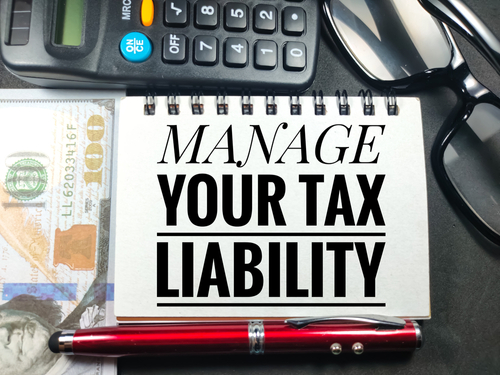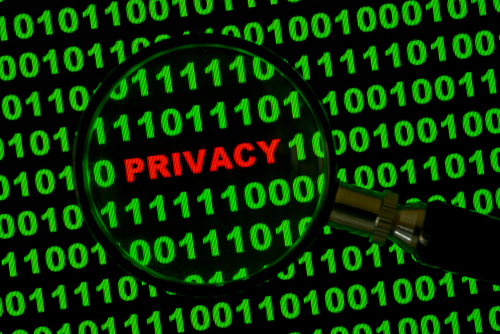
 Gosh, it feels great to get that tax refund. Dreams of a much-needed vacation or a splurge on something you’ve been craving might be running through your mind. However, as unexciting as this sounds, you might want to spend this chunk of change on things that really matter. Here’s a list of smart uses for your tax refund that you’ll be glad you acted upon.
Gosh, it feels great to get that tax refund. Dreams of a much-needed vacation or a splurge on something you’ve been craving might be running through your mind. However, as unexciting as this sounds, you might want to spend this chunk of change on things that really matter. Here’s a list of smart uses for your tax refund that you’ll be glad you acted upon.
Build an Emergency Fund
Let’s face it. We depend on our machines to make life easier. However, these metal contraptions can (and will) break down. When this happens and you have money socked away, you won’t have to shell out a big part of your household budget to get them fixed or replaced. You’ll be prepared. Plus, saving money for something like this could also be a way to avoid stress. According to the American Psychological Association, 77 percent of Americans aged 35-44 say that money (or the lack of) is their main source of stress. The best way to save for the unexpected is to have a part of every paycheck auto drafted into a savings account – tuck those dollars away while you relax.
Pay Off Debt
Yes, at first blush, this doesn’t seem like a lot of fun. That said, carrying around debt and paying high interest rates can be a heavy burden to bear. Imagine how relieved you’ll be when you either pay off all your debt or a good portion of it. No longer will you be a slave to those monthly payments. And here’s a plus: Paying off your debt will improve your credit score. You ready?
Make a Down Payment on a New Car
Or, if you want to buy a good used one, buy it! But back to the new vehicles. When you get a new car, you not only get a new warranty and reliability, but also new technology and safety features. And word on the street is it that dealerships are starting to offer lower interest rates and great pricing incentives. Put your pedal to the metal on this one.
Pay Down Student Loans
Whether you’re a parent or child, this is a great use for a tax refund. Alleviating debt, no matter the source, is always a good thing. Now, you might hesitate given that President Biden recently canceled debt for a lot of students. However, this doesn’t apply to everyone, as some students have private loans and others don’t qualify. Another part of the upside of whittling away student debt is that there’s no penalty for paying more often and/or making extra payments. The sooner you get rid of this obligation, the more freedom you’ll experience.
Make Home Repairs
If you’ve been putting off getting a new water heater or replacing doors, now’s the time. Why? You may be eligible for tax credits for upgrading your home with “green” improvements. While not all renovations qualify, the ones that do include energy-efficient HVAC systems, windows, additional insulation, and modifying doorways for wheelchairs and walkers. That’s planning ahead!
Invest Your Money
If you’re not risk averse, the stock market is a good short-term option. However, if you’re more conservative, IRAs, CDs, and Treasury Bills are your best bet. The yield on the two aforementioned, T-bills and CDs, are higher than they’ve been in years, with many at 5 percent. Making money on your money is always a good idea.
What you decide to do with your tax refund is personal, depending on where you are in your life. There’s nothing wrong with splurging. However, in these uncertain times, putting it to good use could come in handy in the long run.
Sources
https://www.kiplinger.com/taxes/taxes/ways-to-spend-your-tax-refund


 Customer relationship management (CRM) plays an important role in documenting, tracking, and managing relationships and interactions with existing and potential customers. It allows businesses to develop stronger customer connections, improve retention, boost sales, enhance customer satisfaction, and drive long-term profitability and growth. Luckily, technological advances have made it possible to have CRM tools that automate these processes. With numerous options available in the market, it’s crucial to carefully evaluate the factors influencing the selection of the right CRM tool.
Customer relationship management (CRM) plays an important role in documenting, tracking, and managing relationships and interactions with existing and potential customers. It allows businesses to develop stronger customer connections, improve retention, boost sales, enhance customer satisfaction, and drive long-term profitability and growth. Luckily, technological advances have made it possible to have CRM tools that automate these processes. With numerous options available in the market, it’s crucial to carefully evaluate the factors influencing the selection of the right CRM tool.
 Ukraine Security Supplemental Appropriations Act, 2024 (HR 8035) – Introduced on April 17, this bill authorizes $60 billion to provide military aid to support Ukraine in its war against Russian invasion. More than a third of this allocation will fund U.S. manufacturing for the replenishment of weapons, stocks and facilities. The bill passed in the House on April 20, in the Senate on April 23, and was signed by the President on April 24. The President indicated that up to $1 billion in weapons supplies for Ukraine would begin delivery within hours.
Ukraine Security Supplemental Appropriations Act, 2024 (HR 8035) – Introduced on April 17, this bill authorizes $60 billion to provide military aid to support Ukraine in its war against Russian invasion. More than a third of this allocation will fund U.S. manufacturing for the replenishment of weapons, stocks and facilities. The bill passed in the House on April 20, in the Senate on April 23, and was signed by the President on April 24. The President indicated that up to $1 billion in weapons supplies for Ukraine would begin delivery within hours.
 The accounting term working capital is essential knowledge for all business owners. Basically, it is the ability of a business to meet its ongoing obligations. Learning about some of the different aspects of working capital is vital for any successful business owner.
The accounting term working capital is essential knowledge for all business owners. Basically, it is the ability of a business to meet its ongoing obligations. Learning about some of the different aspects of working capital is vital for any successful business owner.
 Most people know the basic concept that certain types of investment accounts are tax sheltered while others are not. Think 401(k), 403(b), IRA and Roth IRA accounts, for example. What most people are not aware of is how you split your investment positions between your taxable and non-taxable accounts can result in major tax savings.
Most people know the basic concept that certain types of investment accounts are tax sheltered while others are not. Think 401(k), 403(b), IRA and Roth IRA accounts, for example. What most people are not aware of is how you split your investment positions between your taxable and non-taxable accounts can result in major tax savings.
 When it comes to any business, but especially for a start-up, it’s essential to determine how long a company can survive before it must declare bankruptcy and/or close its doors. The biggest metric, especially for a start-up, is to determine how much money a company has to keep its lights on.
When it comes to any business, but especially for a start-up, it’s essential to determine how long a company can survive before it must declare bankruptcy and/or close its doors. The biggest metric, especially for a start-up, is to determine how much money a company has to keep its lights on.
 One of the more insightful quotes of baseball great Yogi Berra was, “If you don’t know where you’re going, you’ll end up someplace else.”
One of the more insightful quotes of baseball great Yogi Berra was, “If you don’t know where you’re going, you’ll end up someplace else.”
 What started as Youth Financial Literacy Day some years ago is now a monthlong event: Financial Literacy Month. It all started in 2003 when some U.S. legislators got together and decided that we needed more days dedicated to this topic. So, what does that mean for us? Plenty. It’s one month out of the entire year you can dedicate to getting your financial ducks in a row by engaging in fiscally savvy activities, absorbing all the knowledge, and then sharing your learnings with family, friends, and the world.
What started as Youth Financial Literacy Day some years ago is now a monthlong event: Financial Literacy Month. It all started in 2003 when some U.S. legislators got together and decided that we needed more days dedicated to this topic. So, what does that mean for us? Plenty. It’s one month out of the entire year you can dedicate to getting your financial ducks in a row by engaging in fiscally savvy activities, absorbing all the knowledge, and then sharing your learnings with family, friends, and the world.
 Modern business today is dominated by digital transactions and interactions. Businesses are increasingly storing customers’ personal information, which is potentially accessible without the customers’ knowledge or consent. Therefore, understanding the significance and implications of digital trust will help businesses foster it, as it is crucial for success.
Modern business today is dominated by digital transactions and interactions. Businesses are increasingly storing customers’ personal information, which is potentially accessible without the customers’ knowledge or consent. Therefore, understanding the significance and implications of digital trust will help businesses foster it, as it is crucial for success. 
 Consolidated Appropriations Act, 2024 (HR 4366) – On March 9, the president signed the latest appropriations bill passed in time to halt a government shutdown. While this bill does authorize funding through the end of the fiscal year (Sept. 30), it only addresses six of the 12 bills necessary to fully fund the government. The recent legislation covers Military Construction, Veterans Affairs, Agriculture, Rural Development, the Food and Drug Administration, the Commerce, Justice and Science-related departments, the Energy Department, the Department of the Interior and the Environment, and Transportation, Housing and Urban Development. On March 23, the president signed the Further Consolidated Appropriations Act, 2024 (HR 2882) in the nick of time to prevent a government shutdown. This subsequent budget legislation includes the remaining spending bills to fully fund the federal government through the end of the fiscal year (Sept. 30).
Consolidated Appropriations Act, 2024 (HR 4366) – On March 9, the president signed the latest appropriations bill passed in time to halt a government shutdown. While this bill does authorize funding through the end of the fiscal year (Sept. 30), it only addresses six of the 12 bills necessary to fully fund the government. The recent legislation covers Military Construction, Veterans Affairs, Agriculture, Rural Development, the Food and Drug Administration, the Commerce, Justice and Science-related departments, the Energy Department, the Department of the Interior and the Environment, and Transportation, Housing and Urban Development. On March 23, the president signed the Further Consolidated Appropriations Act, 2024 (HR 2882) in the nick of time to prevent a government shutdown. This subsequent budget legislation includes the remaining spending bills to fully fund the federal government through the end of the fiscal year (Sept. 30).